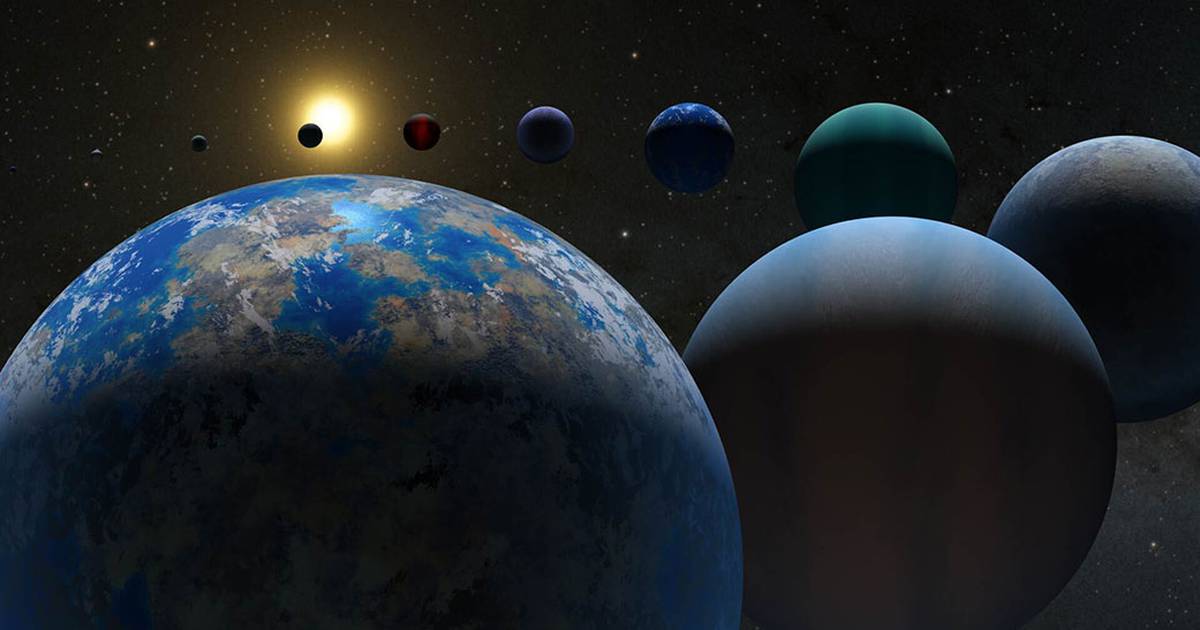Not so long ago, we lived in space with only a small number of known planets, and they all revolve around our Sun. But a new series of discoveries marks a scientific pinnacle: it has been confirmed that more than 5,000 planets exist outside our solar system.
The planetary odometer was turned on on March 21, and the last series of 65 exoplanets, or planets outside our immediate solar family, has been added to NASA’s exoplanet archive. The archive records exoplanet discoveries that appear in peer-reviewed scientific papers, which have been confirmed by multiple detection methods or analytical techniques.
More than 5,000 planets include small, rocky worlds like Earth, gas giants many times larger than Jupiter, and “hot Jupiters” in glowing close orbits around their stars. There are “super-Earths,” which are possible rocky worlds larger than ours, and “mini-Neptunes,” smaller versions of our system’s Neptunes. In addition to all this, there are planets that stubbornly continue to orbit the collapsed remains of ‘extinguished’ stars, writes NASA.
– It’s not just a number. Each of them is a new world, a completely new planet. I get excited about everyone because we don’t know anything about them, ”she said Jessie Christiansenscientific head of the archive and scientist from NASA’s Exoplanet Scientific Institute at Caltech in Pasadena.
What we do know is that our galaxy probably contains hundreds of billions of such planets. The continuous drum of discovery began in 1992 with the discovery of strange new worlds orbiting an even stranger star. It was a type of neutron star known as the pulsar, a stellar corpse that rotates rapidly and pulsates with millisecond bursts of radiant radiation. Measuring small changes in pulse time has allowed scientists to detect planets in orbit around pulsars.
“Finding just three planets around this spinning star has opened the door for others,” he said Alexander Wolszczan a leading author of a paper that discovered the first planets confirmed outside our solar system 30 years ago.
– If we could find planets around a neutron star, planets must be everywhere. The process is very robust – said Wolszczan.
Wolszczan, who is still looking for exoplanets as a professor at Penn State, says we are opening an era of discovery that will go beyond simply adding new planets to the list. The Transiting Exoplanet Survey Satellite (TESS), launched in 2018, continues with new discoveries of exoplanets, but soon powerful next-generation telescopes and their highly sensitive instruments, starting with the recently launched James Webb Space Telescope, will capture light from the exoplanet’s atmosphere, recording gases present to potentially identify signal signs of habitable conditions.
The Nancy Grace Space Telescope, which is expected to be launched in 2027, will lead to new discoveries of exoplanets using a variety of methods. The mission of the European Space Agency ARIEL, which will be launched in 2029, will observe the atmosphere of exoplanets; part of NASA’s onboard technology, called CASE, will help find clouds and nebulae of exoplanets.
– In my opinion, it is inevitable that we will find some kind of life somewhere – most likely some primitive kind – said Wolszczan.
“The close connection between the chemistry of life on Earth and the chemistry found throughout the universe, as well as the discovery of widespread organic molecules, suggests that the discovery of life itself is only a matter of time,” he added.
How to find other worlds?
The first planet discovered around a Sun-like star, in 1995, was hot Jupiter: a gaseous giant that is about half the mass of our Jupiter in extremely close, four-day orbit around its star. In other words, a year on this planet lasts only four days.
Several such planets were discovered in data from Earth telescopes after astronomers learned to recognize them – first dozens, then hundreds. They were found by the method of “oscillations”: by tracking the slight movements of the star back and forth, caused by the gravitational pull of the planets in orbit. But still, nothing seemed to be suitable for living.
Finding small, rocky worlds more similar to ours required the next big step in exoplanet hunting technology: the “transit” method. Astronomer William Borucki he came up with the idea of connecting extremely sensitive light detectors to a telescope and then launching it into space. The telescope would stare at a field of more than 170,000 stars for years, looking for small dips in starlight when the planet was covered by stars.
This idea was realized in the Kepler Space Telescope. Borucki, chief researcher at the now-retired Kepler mission, says its launch in 2009 opened a new window into space.
– I feel real satisfaction and real awe for what is out there. None of us expected this huge variety of planetary systems and stars. It’s just amazing, ”he said.
